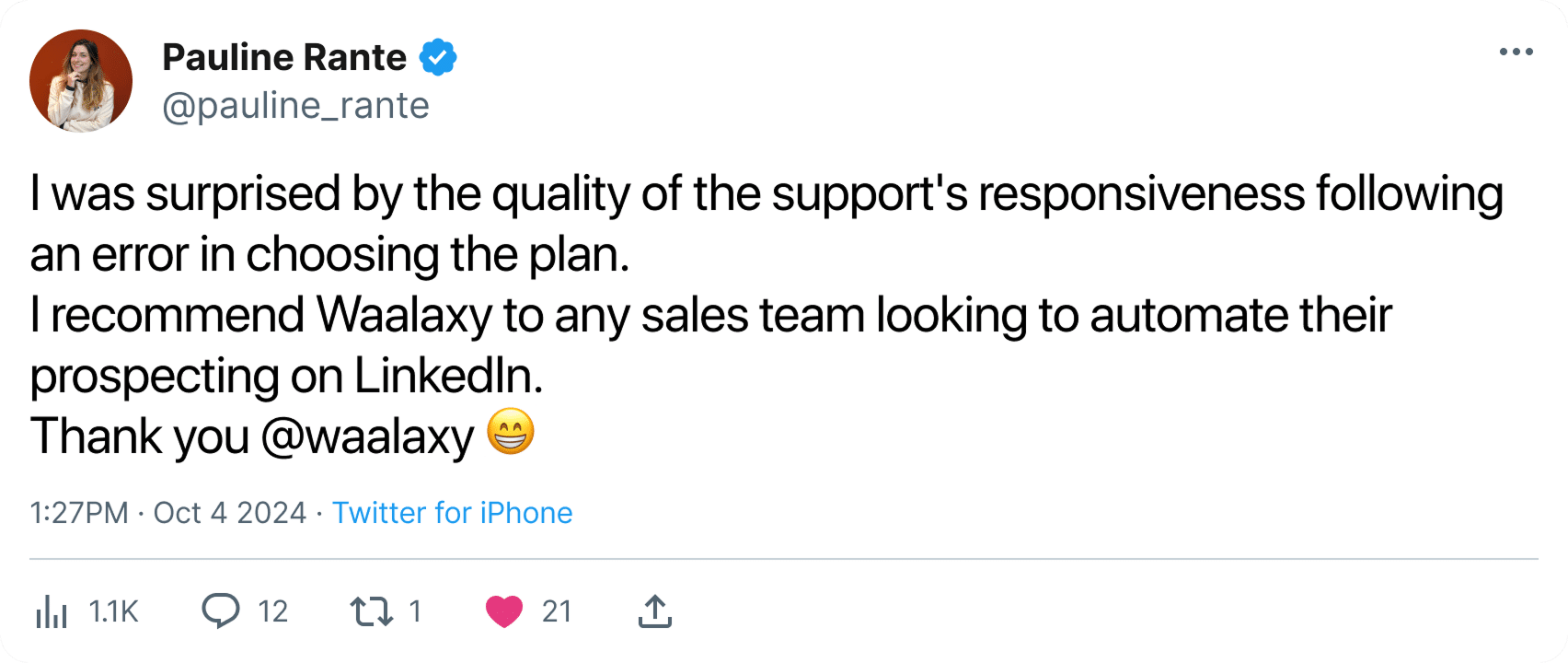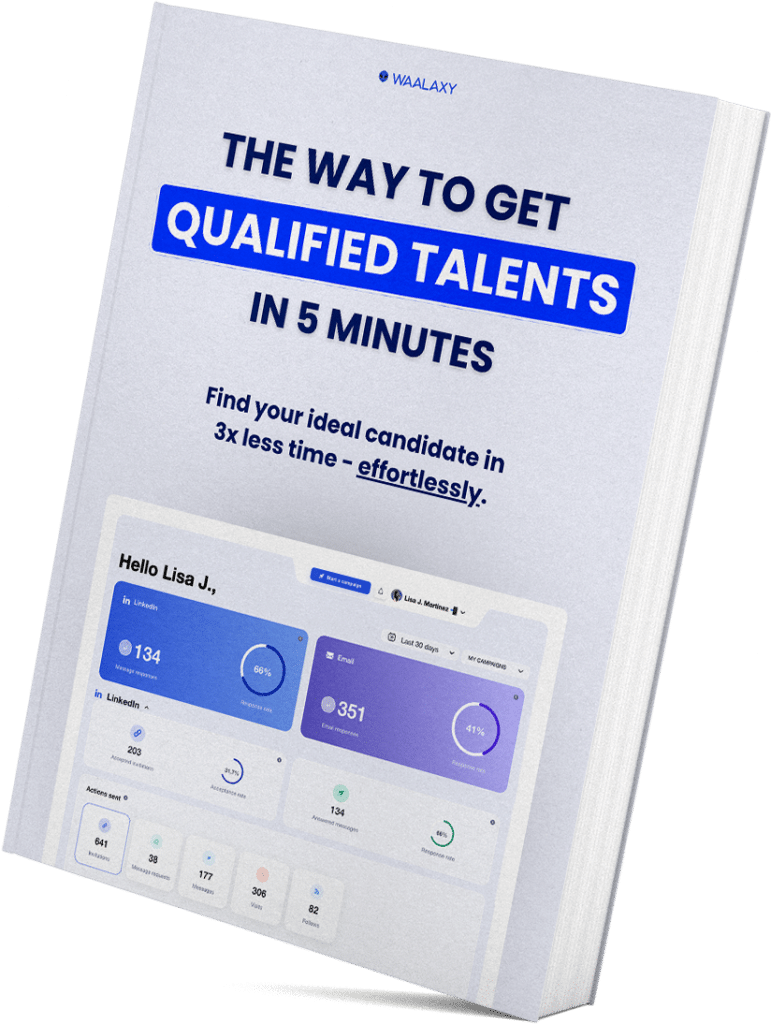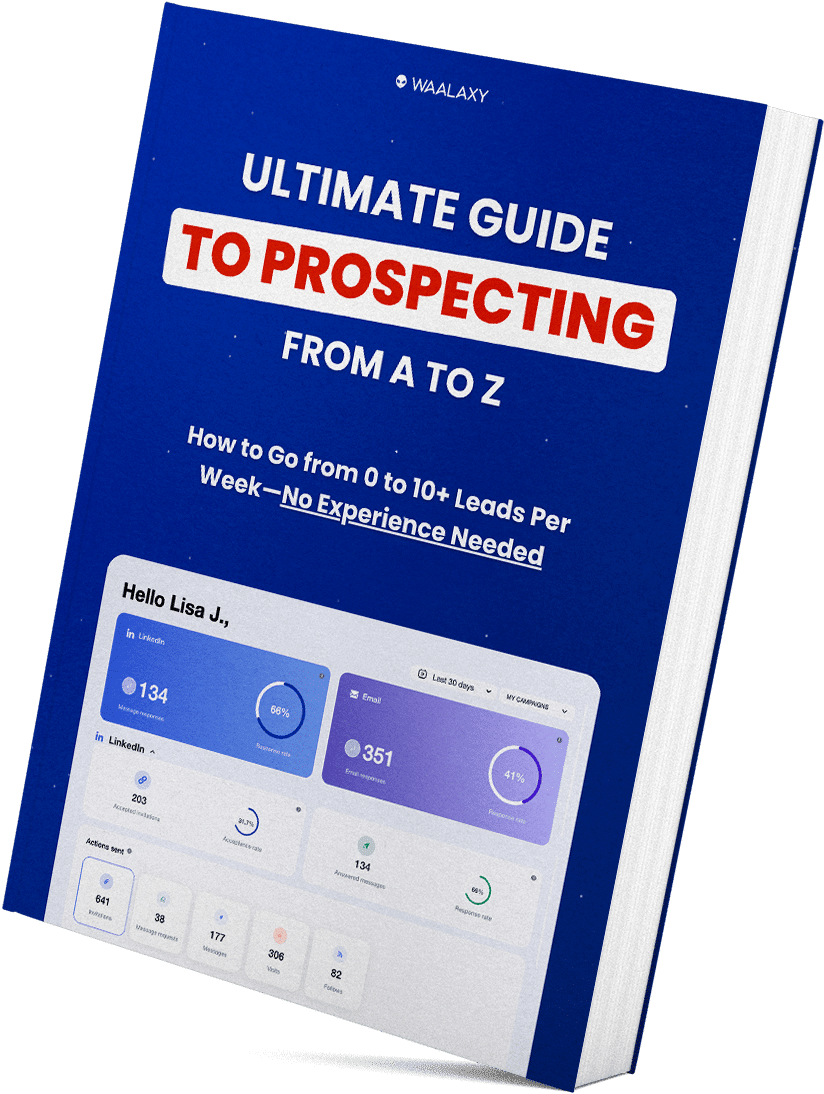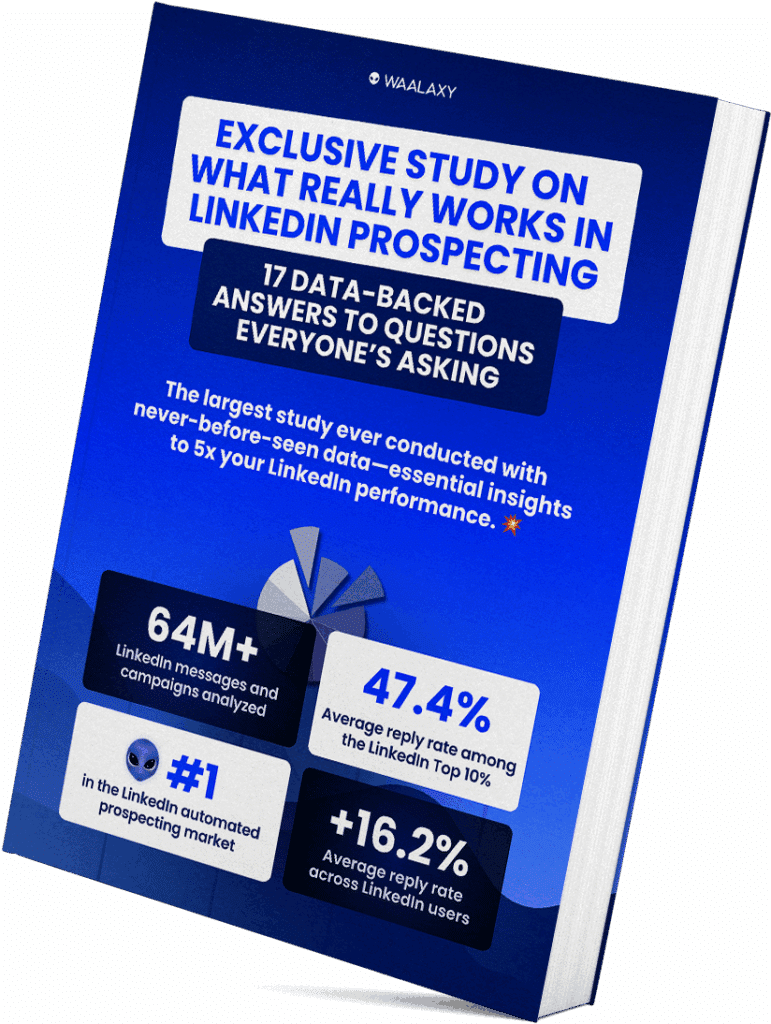- Understanding Inbound Leads vs Outbound Leads
- What is an Inbound Lead?
- What is an Outbound Lead?
- Differences between Inbound Leads vs Outbound Leads
- Pros and Cons of Inbound Leads vs Ooutbound Leads
- Strategies for Converting Outbound Leads
- Strategies for Converting Inbound Leads
- Conclusion: Inbound leads and Outbound leads
- Frequently Asked Questions (FAQ)
What are the differences between Inbound leads vs Outbound leads? 🤔
An outbound lead is contacted directly by the company via calls, emails or advertisements. 🎯 An inbound lead discovers the company on its own through content or recommendations.
In this article, we’ll look at the main differences and how to convert them! ⚡
Understanding Inbound Leads vs Outbound Leads
Simply put, inbound leads are potential customers who come to you. 🧲
New prospects find your company through a variety of acquisition channels: paid search, blogs with optimized content, word of mouth, online registration forms, social media are common tools for detailed lead generation.
Inbound and outbound lead generation is a key element of your marketing strategy:
👉 An inbound lead comes from a prospect who initiates contact with your company, often via content or SEO.
👉 An outbound lead is generated when your company contacts a prospect directly via prospecting campaigns.
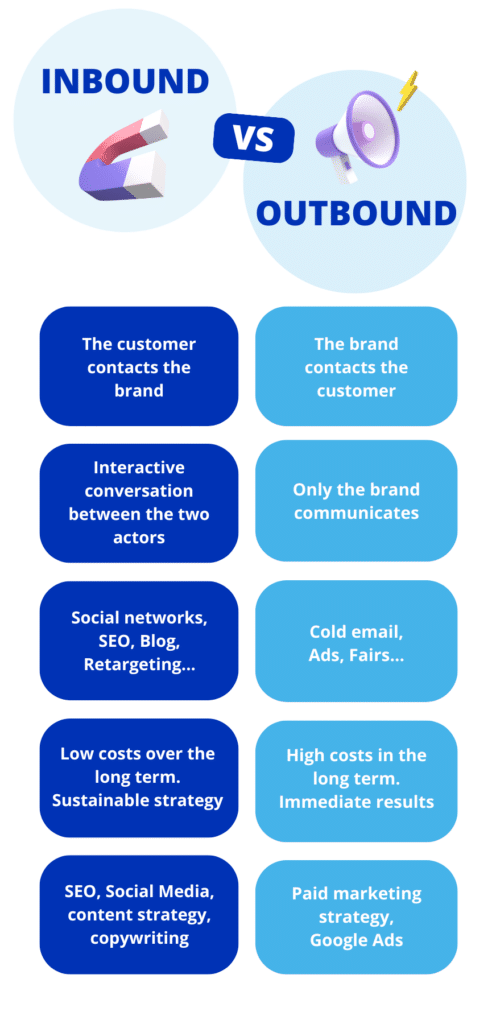
What is an Inbound Lead?
An inbound lead is a prospect who proactively discovers and contacts your company, usually after interacting with your content or online channels. 🗣️
Lead generation is achieved through the creation of content and marketing campaigns capable of attracting visitors to the website (or dedicated “landing page”) and turning them into potential customers. 🎯
This can include SEO strategies or paid/organic activity on social networks to get potential customers to post your content! 👀
Inbound Lead Generation Methods
Here are a few methods for generating inbound leads, you can think of lead generation as a flow that starts with content creation: 🛶
- Publish SEO-optimized content on your blog and website, to improve your visibility and attract qualified organic traffic.
- Optimize content for social proof and link back to your website. 🙏
- Integrate “lead magnnets” (free downloads, special events, giveaways) into your website.
- Add contact forms to your website. ✍️
- Capture all user-generatedregistrations and information with a customer relationship management (CRM) tool.
- Use automation tools, such as Waalaxy, to send specially targeted content to potential customers.
- Engage in content marketing: create informative blogs, white papers and e-books to attract leads.
- Launch your social media strategy: the engagement generated on social platforms helps generate leads too. 👏
What is an Outbound Lead?
An outbound lead is a prospect that your company contacts directly, often without prior interaction, through various prospecting strategies. 💥
Outbound leads are prospects who don’t know your business yet. 🤔
This means that a company must target outbound leads by deploying a proactive prospecting strategy, either through “cold email”, “cold calling” or multi-channel prospecting.
These leads are unfamiliar with your company, and require more effort to attract and convert. 🎣
The conversion rates of outbound leads are often lower than those of inbound leads, however they move more easily through the sales tunnel, as well as providing a faster return on investment. 🤑
Outbound Lead Generation Methods
Now let’s move on to strategies for generating qualified outbound leads 👇
- Cold emailing: the cheapest, easiest and most effective way to reach many prospects simultaneously. Send promotional emails to present your products or services.
- Cold calls: contact potential prospects by phone without prior introduction. 🙉 This is the oldest and most popular prospecting channel, it requires patience and experience and can be stressful for beginners.
- Social Selling: LinkedIn is an excellent platform for B2B leads, but its limit of messages and invitations per week limits its effectiveness. 👽 Waalaxy offers features such as automatic connection requests, personalized campaigns and voice messages to help you prospect more effectively.
- Multi-channel prospecting: combining cold calls, cold emails and LinkedIn contacts in a single campaign increases the chances that prospects will engage with your campaign and respond to your offer. ⚡
- Paid advertising: using online or offline ads to reach a wide audience.
Differences between Inbound Leads vs Outbound Leads
An easy way to remember the difference between inbound leads vs outbound leads: inbound leads, as the name suggests, enter your business; whereas you have to “go out” to find outbound leads. 👏
Marketers often shift their focus and spend from outbound marketing to inbound marketing. 🧐
Outbound leads aren’t interested in your company at first sight. It’s up to you to engage with them and convert them. 🏹
That’s why outbound leads are more expensive. 🤑 Overall, they cost 39% more than inbound leads ( “State of marketing” report, by HubSpot).
The biggest challenge with outbound leads is, of course, that they’re unlikely to buy in the first place… 🥹 Whereas inbound leads, have already expressed interest in your products and services.
Inbound leads are warm leads, 🔥 and are more qualified, so easier to convert! And, you guessed it, outbound leads are considered cold prospects. ❄️
Pros and Cons of Inbound Leads vs Ooutbound Leads
Let’s take a look at some of the advantages and disadvantages of inbound leads vs outbound leads. ⏬
Whereas outbound marketing (TV ads, phone calls) used to be a centerpiece of traditional marketing practices, today brands are cutting back in order to increase spending on their content marketing strategy. 🪶
| Pros | Cons | |
| Outbound Leads | – More familiar formats: advertisements, announcements, cold calls. 📞 – Shortening the sales cycle: you can get immediate feedback from prospects and the sales team. – Immediate results: outbound strategies generate leads faster by targeting prospects directly. 🧨 – Greater control: Ability to target specific market segments according to your criteria. | – Negative association between cold email and telemarketers. 🗣️ – Increased Ad Blocking/deletion technology. – More expensive than inbound lead generation. 💰 |
| Inbound Leads | – More leads; up to 3 times better than outbound marketing. 🧲 – Better segmentation of incoming leads. – Lower cost per lead: Less expensive thanks to organic methods like SEO and content marketing. 🌱 – High-quality leads: These prospects have already shown an interest in your offer, increasing the chances of conversion. | – Potentially many channels to manage, adding complexity. Longer sales cycle. – Requires constant analysis of marketing efforts. 💪 |
While outbound leads may give the impression of being more proactive, they can be more expensive and less effective in the long term. 🤑
However, it’s a well-known fact that inbound marketing campaigns have a better return on investment if they’re well executed. 👋
We can say that a strategy for generating inbound leads relies above all on unique and targeted goals, 🎯 you need to be patient and have a good follow-up system.
Strategies for Converting Outbound Leads
Converting leads requires an active, targeted approach. 👉 For marketers, it’s important to combine technology and personalization to effectively access their audience and maximize conversion rates.
Here are some key strategies and practical tips for getting the most out of your outbound prospecting efforts ⏬
1. Sales on LinkedIn: Automation and hacks
- Target the right people with LinkedIn Sales Navigator: Use advanced filters to identify the most relevant prospects for your niche.
- Take a personalized approach: Mention a prospect’s recent post or current event to show that your message isn’t generic. 🤩
- Use message sequences with progressive follow-ups: Plan your messages to maintain engagement without being intrusive.
- Export likes and connection requests: Use tools like Waalaxy to automatically extract engaged profiles and integrate them into your follow-up campaigns.
- Combine prospecting + content: Balance the publication of engaging content with direct prospecting to attract and convert simultaneously. ✨
2. Advertising (Ads): What approach? How to retarget?
- Launch lead gen Ads campaigns on LinkedIn or Facebook: Create ads specifically designed for lead gathering, using clear incentives and strong CTAs (Call to Action). 📣
- Create personalized audiences with retargeting: Target visitors to your site who haven’t converted by using cookies to show them personalized ads.
- Relaunch prospects with an irresistible offer after an initial interaction: Use special offers or limited discounts to re-capture the interest of prospects who have shown initial engagement. 💫
- Discover how retargeting works: Familiarize yourself with retargeting tools and techniques to optimize your campaigns and increase conversion rates.
These strategies, combined with a thorough understanding of your tools and platforms, will enable any marketer to effectively turn outbound leads into loyal customers. 🙏
Strategies for Converting Inbound Leads
In the world of digital marketing, converting inbound leads into paying customers is essential to maximizing return on investment. 😊
Inbound leads, often attracted by online content, offer a unique conversion opportunity because they’ve already expressed an interest in your products or services.
Here are some proven strategies for optimizing your conversion process and increasing the effectiveness of your prospecting funnel:
1. SEO: Attract and Convert
- Optimize content to capture qualified leads: Use relevant keywords to improve SEO and attract targeted visitors.
- Implement an email capture strategy on your blog: Offer lead magnets (e-books, whitepapers) in exchange for email addresses to build your mailing list. 🧲
- Analyze user behavior: Use tools like Google Analytics to understand what attracts visitors and adjust your content accordingly.
2. Blogs: Educating Potential Customers
- Regularly publish relevant articles: Keep your audience engaged and informed with articles that address their questions and needs.
- Include clear calls to action: 📣 Every article should prompt the reader to take action, whether to subscribe, download a guide or contact your company.
- Optimize for conversion: Place sign-up forms and special offers strategically in your articles to convert readers into leads.
3. A clear, persuasive Landing Page
- A simple message and a direct call-to-action (CTA): Make sure your CTA is visible and clearly prompts an action, such as registering or buying. 📧
- Social proof (testimonials, key figures): Include testimonials from satisfied customers and statistics that validate the effectiveness of your offer.
- An optimized form to collect leads efficiently: Simplify the form to increase conversion rates; ask only for essential information.
4. Podcast: Creating a Community that converts
- Engage listeners with quality content: produce episodes that add real value and address your audience’s specific issues. 👄
- Incorporate calls to action: Encourage listeners to visit your website and sign up for more exclusive content at the end of each episode.
- Promote your podcast on LinkedIn: Make strategic partnerships and collaborate with other content creators to cross audiences and increase your reach.
These strategies will enable marketers to take full advantage of incoming leads, turning initial interest into concrete, profitable engagements. 🫶
Conclusion: Inbound leads and Outbound leads
Understanding the distinction between inbound and outbound leads is essential to developing an effective strategy. 💥 By combining these two approaches and leveraging automation with tools like Waalaxy, you maximize your chances of conversion.
Outbound leads require proactive approaches, cold emails or cold calls, because they don’t know your business. 🗣️
Although the cost is higher and the initial conversion rate is lower than with inbound leads, calling strategies allow you to get revenue faster. 🤑
Outbound lead acquisition allows you to target more precisely and generate rapid engagement. 🎯 The best way to create leads is multi-channel prospecting.
The role of sales and growth marketing teams, is essential in lead management to successfully extend market reach. 👌
Frequently Asked Questions (FAQ)
What’s the difference between a Lead and a Prospect?
The difference between a lead vs prospect is that a lead means that a person or company has expressed initial interest in your product or service, usually through basic interactions such as filling in online forms. ✍️
Prospects are leads that have been evaluated and deemed to be in a position to become a customer, showing clearer interest, and meeting certain company-specific criteria, implementing the relevant direct sales method. 👌
What’s the most effective way to Generate Leads?
It all depends on your sector and target market. 🏹 Inbound leads are often more qualified and less costly, while outbound leads bring faster results.
Can Inbound leads vs Outbound lead Strategies be combined?
Yes, combining inbound and outbound lead strategies can be very effective. 😉 Inbound leads attract customers through quality content and SEO tactics, creating initial engagement.
Outbound leads, through direct calls and emails, actively target prospects. 🔫 Using both strategies maximizes reach and optimizes the conversion process by reaching both passive and active customers.
Now you know all about inbound leads vs outbound leads! Now it’s your turn. 🕹️


